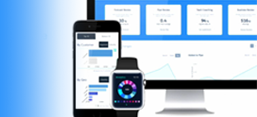sales metrics
Skyrocket Your Sales with Better Metric Implementation

Which Comes First? Analytics or Performance?

What Are the Most Common Sales Metrics to track?
An article in Entrepreneur reports 6 key metrics for sales analysis:
- Total sales by time period
- Sales by product or service
- Sales by lead source
- Revenue per sale
- New vs. returning customer sales
- Sales per prior activity
Each of these sales metrics gives teams and managers a clear view of performance during a set time period. Tracking sales performance in this way allows managers and their teams to measure performance against goals.
These metrics, however, have limitations. Often called lagging indicators, most of these Key Performance Indicators (KPIs) can only tell the story of what happened in a past time period.
Sales Metrics to Track: Leading and Lagging Indicators
Leading indicators are metrics that can have real-time impact on your bottom line. Lagging indicators give a report of what happened in a previous time period. High performing companies and teams understand the importance of using leading indicators as well as lagging indicators.
Many businesses set goals based on lagging indicators. For example, if your team made X amount in sales last quarter, then you can make a goal to improve that number by X% next quarter.
While the lagging indicators give a view of last week, last month, or last quarter, real-time leading indicators can give you the insight to adjust direction midstream. Jason Jordan, author of Cracking the Sales Management Code, teaches you to focus on the leading indicators, measures that can be changed, such as number of meetings, number of follow ups on leads, and number of calls to prospects.
Focusing on leading indicators means having a way to track progress. Customisable CRM dashboards can offer metrics and customised reports in real-time, allowing for quick course corrections based on leading indicators. “Accountability drives productivity,” the mantra for businesses and sales teams using analytics to fuel sales.
An ideal leading indicator would be using a sales call tracking sheet in CRM. Based on past data, sales managers can see how many calls typically lead to a sale. This can help managers know when they need to coach their teams to increase their calls.
Daily, even hourly, consultation of real-time metrics allows business leaders to make informed decisions and course corrections. For instance, a call center may be using two different scripts for customer calls. Real-time analytics may show that the first script is producing better results than the second. Access to real-time performance data allows the call center manager to instruct the sales reps using the second script to change to the first. This mid-course correction increases the bottom line.
Real-time analytic feedback allows these course corrections to happen instead of having to wait until the end of the sales period for a report that merely documents lagging indicators, numbers that can’t be changed. Therefore using analytic insights for leading indicators can change the course of sales for the better.
Analytics Also Drives Marketing
Lately, there’s been an emphasis on using analytics to improve not only sales but also marketing. VentureBeat surveyed marketing professionals of over 1000 brands and found 73% of those brands plan to increase spending on marketing analytics over the next three years.
The reason for increased marketing analytics is the same reason for increased sales analytics: increased performance. An article in Harvard Business Review shows that analytic insights increase profits and show a higher return on marketing investment. The authors of the study, Matt Ariker, Alejandro Diaz, Christine Moorman, and Mike Westover, identified the most common analytical marketing measures to track:
- Customer acquisition
- Marketing Mix
- Customer Retention
- Social Media
- Segmentation
- Promotion Strategy
- Branding
- Pricing Strategy
- Product or Service Strategy
- New Product or Service Development
- Multichannel Marketing
Of course, not every company employs every marketing measure. The researchers found when companies applied analytics to an additional measure, the result was a .39% increase in profit. Using three “units” of marketing analytics improves profits by over 1%.
4 Important Lessons about Analytics

1. Get the metrics to the right people.
Often analytics are only seen by high-level executives and managers. If the metrics don’t get to the right people, that is, the mid-level and frontline people who can change leading indicators, the analytics are only numbers. Remember, goals need to be articulated and measured properly to be effective and that means sharing the goals and measurements with everyone in the company. Metrics work when the entire team is involved.
2. Choose a few key metrics to start.
It’s easy to get excited about marketing and sales analytics and overwhelm your team in the process. It’s likely that your business already measures a few lagging indicators like total sales per time period, revenue per sale, or sales per product. To begin using analytics more effectively, add a few leading indicator metrics like number of calls to prospects, number of follow up calls, or time elapsed before a web form lead is contacted.
3. Use customisable CRM dashboards for analytics to drive sales.
Metrics can be gathered in real time through cloud based CRM applications. Jordan explains that CRM is a “decision making tool” for sales leaders to find actionable items to directly increase revenue. For instance, if a sales rep makes X number of calls on average which results in X number of qualified deals in the sales pipeline, managers can expect qualified deals in the pipeline to increase when number of calls increase. Having the analytics available allows managers and executives to give the directions necessary to increase sales.
4. Set “Sales Activity Goals” based on analytics.
Fueling sales efforts based on analytics means setting the right goals. Jordan suggests that the most effective sales pipeline management begins with what he terms as Sales Activity Goals. Not only are they clearly defined and measurable, Sales Activity Goals are also actions that can be taken to directly affect sales results. Based on analytic reports, managers and executives can identify the sales activity that will yield the best results.
While many companies will increase their use of analytics in the next year, the smart companies will see sales increase as a result. By using analytics to inform daily decisions, you are able to see the patterns and make the decisions to increase your bottom line. Having the right people at all levels in the company will help in reaching goals, but don’t overwhelm your company with too many metrics all at once. Start your sales analytics initiative with a few key metrics and use customisable CRM dashboards to track your progress. Finally, “Sales Activity Goals” are key in allowing sales metrics to guide sales. Measuring actions such as follow-up calls that directly result in sales gives actionable tasks to measure and then improve. Sales analytics, informed by best sales practices, leads to more sales and bigger wins.



